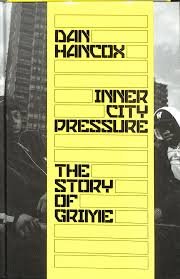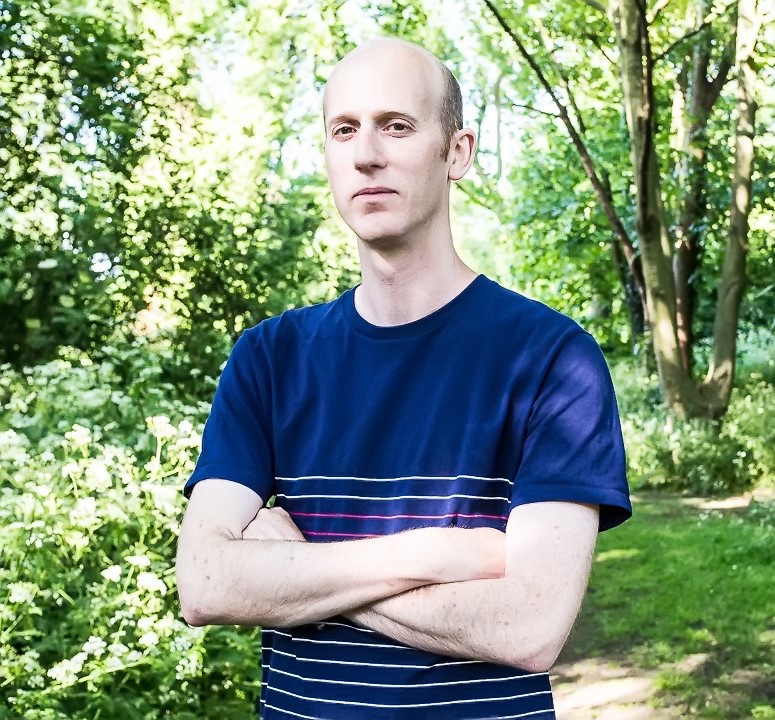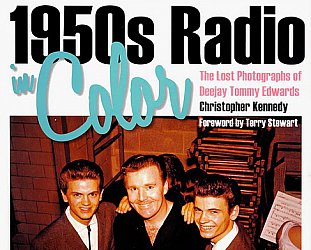Graham Reid | | 4 min read
Pow! (Forward), by Lethal Bizzle

In 2006 the American Mark Kurlansky wrote The Big Oyster; History on the Half Shell which was nominally about the history of oysters and oyster bars in New York City (oysters as big as babies in the Hudson when European colonists arrived) but was in fact the story of the city itself.
This idea of a topic expanding into social, cultural and political history was not new – Kurlansky had been there previously with books about cod and salt – but it became quite a trend with books about maps, languages, bread and such where the titular topic often proved that non-fiction was stranger than fiction.
British writer Dan Hancox in Inner City Pressure takes his topic as much more specific, focused and indeed almost microscopically urban. It is the rise and culture of grime, a musical genre out of East London in just the new millennium.
This was a musical style which was sonically raw from staggeringly aggressive beats, lyrically confrontational (although the threats of violence were often more metaphorical than literal, and often very funny) and also borne of a marginalised social group of predominantly Black British youth in the working-class (and non-working) subset within Greater London.
What was important about this genre and these artists – and yes, they are creative, articulate artists and hold a mirror up to their world and experiences as any other – was the collective drive they had.
The mic was passed around democratically, they shared “stages” and time on the many pirate radio stations which would emerge (and which they helped put together) on the roofs of tenement blocks in the shadow of conspicuously wealthy Canary Wharf and the increasing redevelopment – yuppification – going on around them.
The major artists to emerge from East London's grime scene were Dizzee Rascal, Wylie, Tinie Tempah, Skepta, Kano, Ruff Sqwad, Jme, Roll Deep and perhaps most notoriously So Solid Crew (although Hancox makes a very persuasive case that they were much maligned by the mainstream media)
This wasn't rap but something unique and specifically English and even specifically East London with its own language, codes of understanding, self-referential lyrics and as much humour as rage.
It was often delivered so fast as to be impenetrable, as anyone who caught Dizzee Rascal in Auckland on his first appearance in 2004 will attest.
But Hancox's wonderful, insightful, exciting and scrupulously researched book is about more than just the grime scene.
As one who was there right from the start and witnessed the style at birth, went to pirate radio stations on rooftops and recording sessions (often just in someone's mum's front room), interviewed the key players and others over more than a decade, Hancox knows exactly what he is talking about when it comes to the artists and the music, the white label releases, arcane references and collaborations.
But this book is also about how grime was marginalised, demonised and deliberately run out of town by the various authorities such as the Metropolitan Police and various governments intent on “cleaning up” these areas of valuable land near the city and the Olympic Games development.
There was, over many years – and Blair's New Labour was as bad as Cameron's Conservatives – an orchestrated campaign which was undeniably racist and classist in its attitude. Youth clubs were closed down, pirate radios hunted out, public land turned into private spaces for yuppie bars and “safe” zones for the new (white) residents moving into the stylish apartment blocks being built or renovated from established housing blocks from which the residents were priced out . . .
Families which had lived in East London for generations – and the grime kids are often the children of reggae artists of the Seventies and Eighties – are pushed out to more remote suburbs and those who remain face even more crushing poverty, lack of employment opportunities and social services.
 East London is an area now under constant surveillance from cameras.
East London is an area now under constant surveillance from cameras.
Hancox – who writes for the Guardian, New York Times and other credible journals – documents all this with compelling statistics which are so shameful they can induce tears of rage and sorrow.
And yet grime survived against the odds, it came back after everyone – even many grime artists themselves – had said it was over.
Alongside Lily Allen, Arctic Monkeys, Florence and the Machine and Noel Gallagher, grime MC Novelist from South London was on the shortlist for the 2018 Mercury Awards, Stormzy was there the previous year, Skepta won in 2016 (and Kano was on the list) . . .
Dizzee Rascal carried the Olympic Torch in 2012, grime has had hit singles and albums, Drake and Kayne lined up to be seen embracing the grime scene and its players, . . .
And why did it survive?
Because it was always about community and the collective. This wasn't a scene where one artist made it and got the bling and bragging rights like US rap, but rather where Stormzy still goes to mic-nights alongside up'n'comers, and Dizzee Rascal – who left to live in Miami for a while – comes home to record an album about that world which birthed this remarkable, resilient style which out of necessity pulled in around itself as a shield from the encroachments, repression, suppression and ignorance.
Dan Hancox has written a remarkable book about grime culture, but it is also so much more. It is about how gentrification kills creative hubs, how money from developers and fine words by politicians conspire against ordinary people who are struggling anyway, how local authorities can have their mandate cleverly taken from them by those who would advance a more surreptitious agenda of social change, and how ignorance is given a megaphone in the mainstream media when the smaller voices on the mic actually speak a greater and more personal truth.
From pirate radio on a rooftop through the London riots in 2001 to the appalling inevitability of the Grenfell Tower fire, this is a book about London – a city built on diverse culture from Roman times where today over 30 languages are spoken and 37 percent of its population were born outside it – in the 21stcentury.
And the story of grime which was there to reflect and critique it.
In his final pages he mentions a more microscopic genre emerging which is even more localised, angry and where the violence may just be actual: drill.
Inner City Pressure; The Story of Grime (pub. William Collins) is essential reading, even if this may not be your music.





post a comment